(2306 products available)















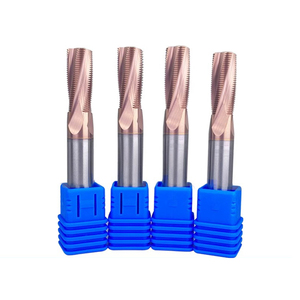
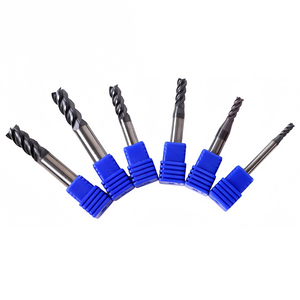

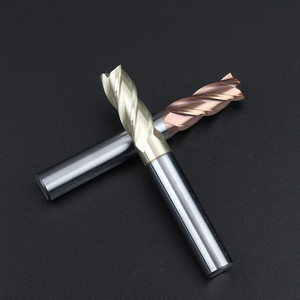
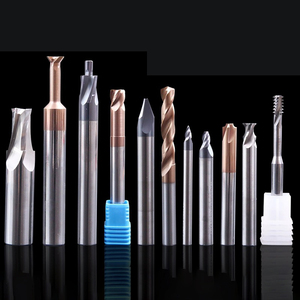





























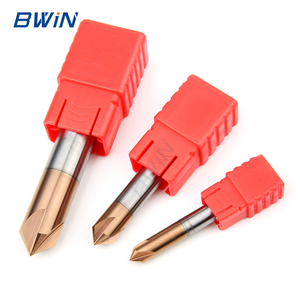



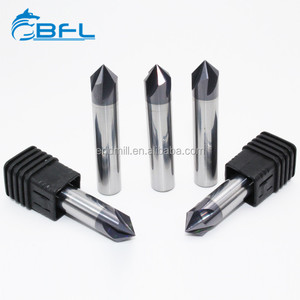
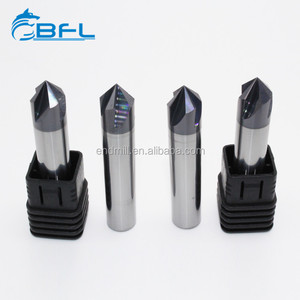
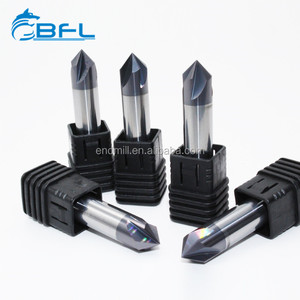






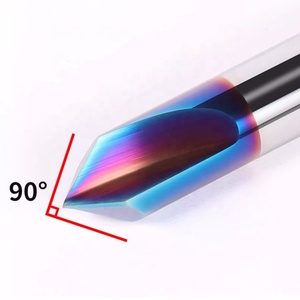






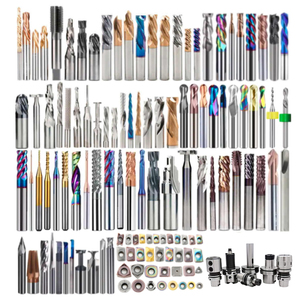

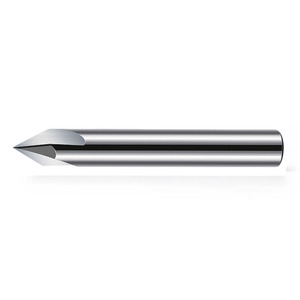



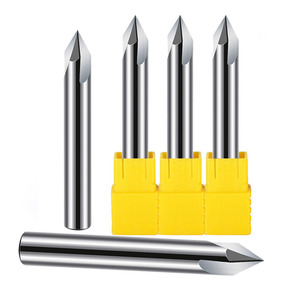
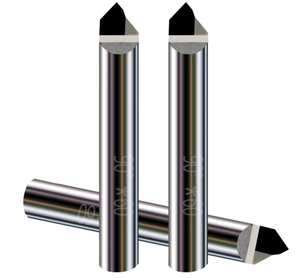

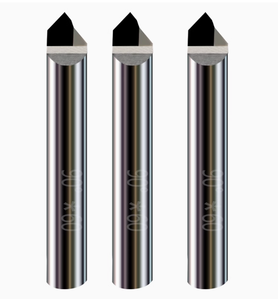






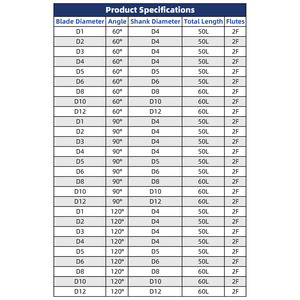

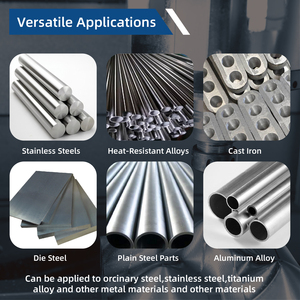
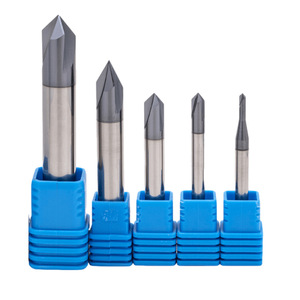

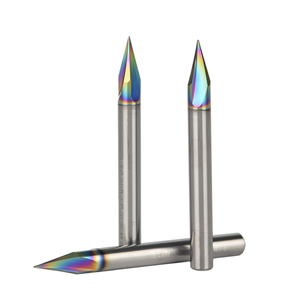
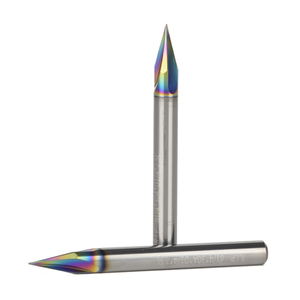



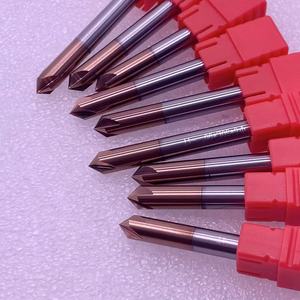


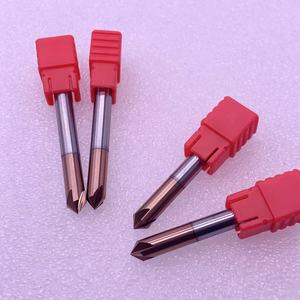


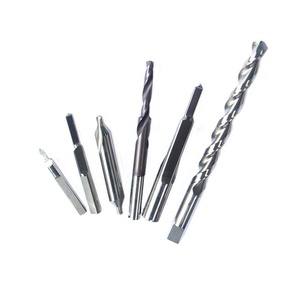

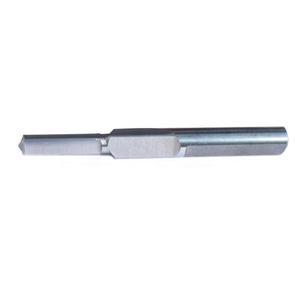




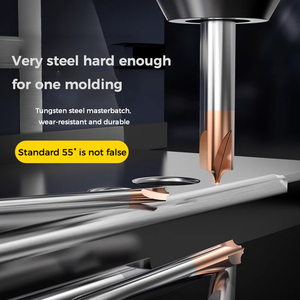
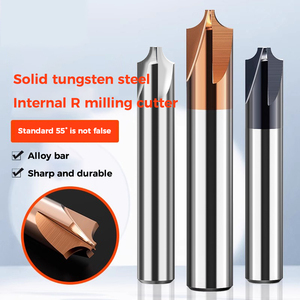

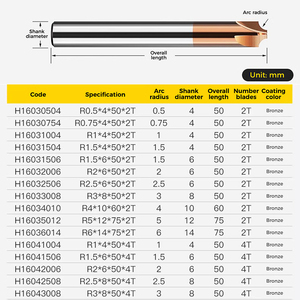

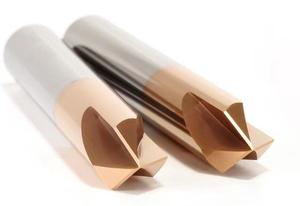







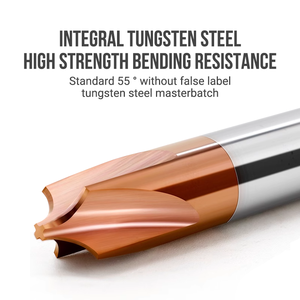
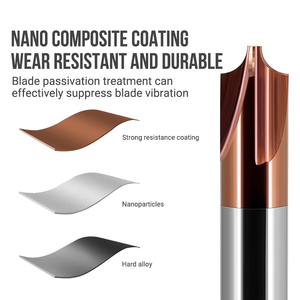

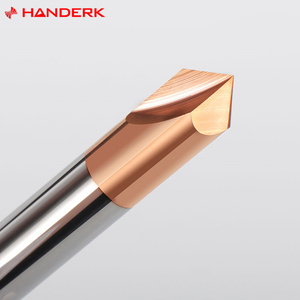
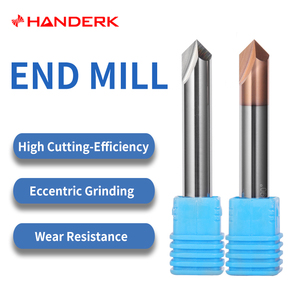
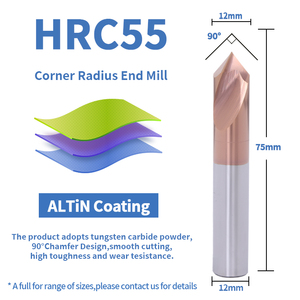







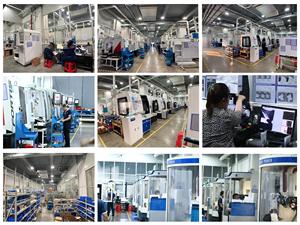





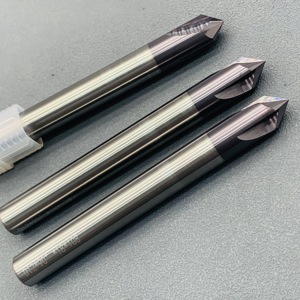

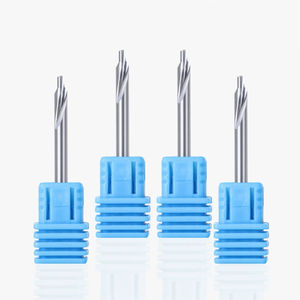
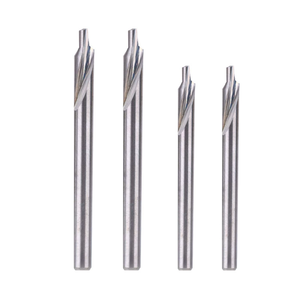

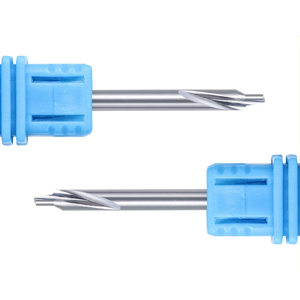





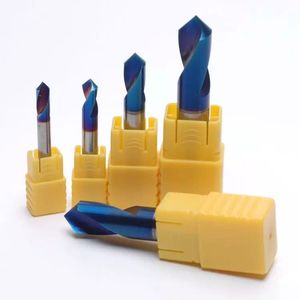


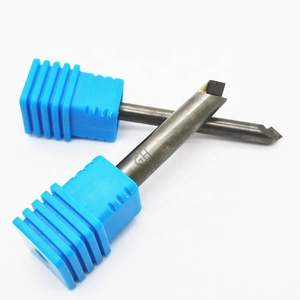



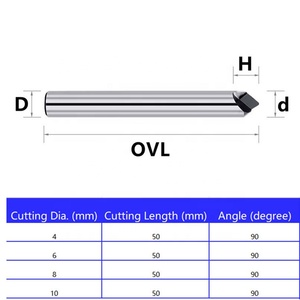





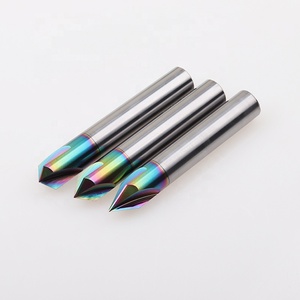
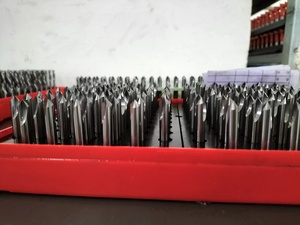









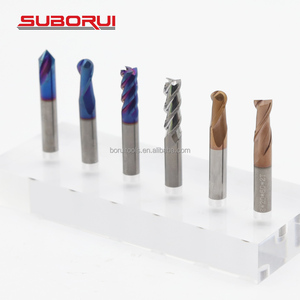




















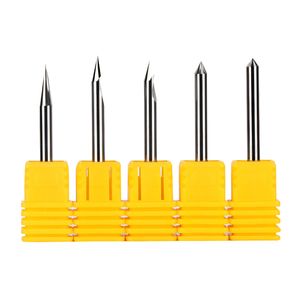

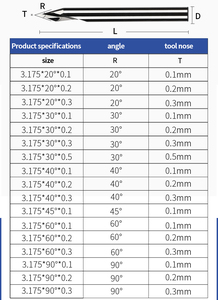
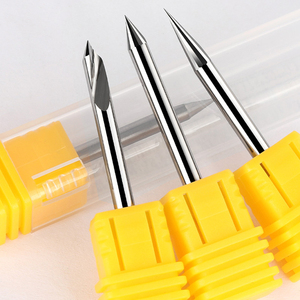





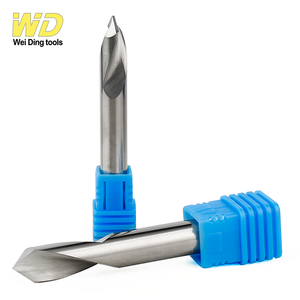

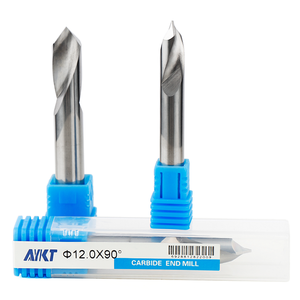


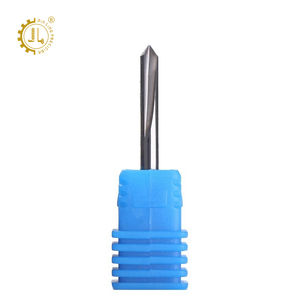
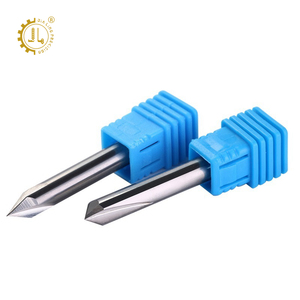

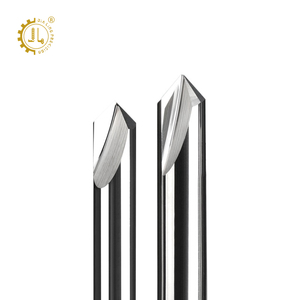
Chamfer end mills are cutting tools that have a slanted edge or bevel on one or more of their cutting surfaces. These tools are used in milling machines or CNC (Computer Numeric Control) equipment to create angled edges or chamfers on workpieces. Chamfer end mills are typically made of high-speed steel (HSS), carbide, or cobalt, which are durable materials that can maintain sharp edges under intense cutting conditions. They come in various shapes and sizes, depending on the desired chamfer angle and depth.
Here are some common types of chamfer end mills:
Single-Face Chamfer End Mill
It has a single angled cutting surface or face, which makes it ideal for creating chamfers with just one angled edge. It is commonly used in scenarios where only one side of a workpiece needs to be beveled. These mills come in various angles reflecting the bevel's slope, the most common being 45 , 30, and 60 degrees.
Double-Face Chamfer End Mill
A double-face chamfer mill has two angled cutting surfaces on the same side and a straight cutting edge. Such tools create chamfers on both sides in a single operation, improving efficiency. This type is especially useful for beveled edges that need to be uniform on both sides of the workpiece.
Multi-Face Chamfer End Mill
Multi-face chamfer mills have more than two angled sides. This characteristic allows it to cut multiple chamfer sizes or angles at once, significantly reducing the time taken to do so. They are used when complex chamfering is required. For instance, multi-faceted tools are employed in mold-making industries to include intricate designs into the molds.
Mold and Die Manufacturing
In this industry, chamfer cutter mills are used to create molds with complex shapes and smooth edges. They are important because they help improve the quality of molds by polishing the edges of molded products. The improvement leads to better product finishes and easier mold release. This makes them very important for injection molding processes where the quality of molded products is key.
Aerospace and Defense
Chamfer end mills are used to make components that weigh less but still perform important functions. These components include brackets, housings, and fasteners. It is critical to know that the tools are used in aerospace equipment production to guarantee such products meet safety and quality requirements. The beveled edges on the components aid in assembling these parts correctly and reduce the chance of parts failing during the critical operations.
Automotive Industry
Automotive manufacturers frequently use chamfer end mills in engine parts and body components. In these industries, chamfering helps deburr these parts, avoiding sharp edges. This leads to improved safety during assembly and operation. Furthermore, chamfered parts ensure smooth fitting of engine components. This, therefore, leads to increased operational efficiency and reduction of potential mechanical failures, making automobiles more reliable.
Furniture and Woodworking Industry
This industry favors chamfer end mills for cutting clean and precise chamfers on wooden furniture components. In most cases, for instance, chamfered edges on tabletops and wooden frames improve aesthetics by providing a polished look. They also reduce the likelihood of splintering, hence improving the safety of these products. Such tools are also important in cabinetry production where clean edges contribute to the quality of installation and the overall appearance.
Electronics
Chamfer end mills in the electronics industry are used to create housings and heat sinks for electronic devices. This helps in risking device performance because the beveled edges improve thermal dissipation. Better heat dissipation manages the temperature of electronic components, ensuring they do not overheat during operation and hence improving system performance and reliability.
The main function of a chamfer end mill is to cut beveled edges on a workpiece. The bevel refers to an angled cut that replaces the sharp edge with a slanted one. It is done to improve the appearance of the object or foam, ease assembling operations, and avoid sharp edges that can be dangerous. Multi window cutter mills are important in machining because they ensure this is done accurately and efficiently on different materials.
Cutting Edges
These mills have angled cutting edges that define the chamfer's slope or bevel. Most mills have multiple flutes, which improve cutting performance by enhancing chip removal and reducing cutting-edge friction. The number of flutes commonly ranges from two to four, with each type having unique cutting characteristics.
Material and Coating
These end mills are made of high-speed steel, carbide, or cobalt. Each material has different strength and heat resistance properties. For example, carbide mills are harder and retain sharpness for longer durations. They are commonly used in manufacturers who deal with hard materials. To improve wear resistance, these mills have coatings like titanium nitride (TiN) or titanium carbide (TC).
Shapes and Sizes
Chamfer end mills are available in various chamfer angles, flutes, and diameters. The angles commonly range from 30 to 60 degrees, while the diameter size ranges from 2 mm to 12 mm. These characteristics can be chosen depending on how the tool will be used and the demands of the manufacturing process.
The design of a chamfer end mill is very critical in determining the mill's performance, function, and features. It incorporates both traditional and modern concepts and methodologies. For instance, computer-aided design (CAD) frequently helps design these mills. This allows for detailed planning of features such as flute geometry, cutter profiles, and edge radii.
After design, advanced manufacturing makes techniques such as electrical discharge machining (EDM) cut these end mills from their material of choice. In the modern era, additive manufacturing is also being explored for making custom carbide chamfer end mills, especially in niche applications.
Material Compatibility
Ultimately, the workpiece material should drive the material choice of the end mill. For instance, manufacturers favor carbide mills for machining hard materials like steel or titanium. High-speed steel end mills are commonly used for softer materials like aluminum and brass. Cobalt mills, which offer a middle ground, also work with both hard and soft materials.
Chamfer Angle and Size
The chamfer end mill's angle and size should relate directly to the job's requirements. Mills with larger diameters cut broader chamfer faces, while smaller diameters make finer cuts. Mill manufacturers offer angles that commonly range from 30 to 60 degrees. These do well for most angles used in assembly operations.
Coatings
End mill coatings directly improve the tool's performance properties. For instance, coatings like titanium nitride improve the mill's wear resistance. Such mills are useful in long-volume machining operations. Coatings like titanium carbide improve the tool's thermal resistance, making it ideal for operations that generate a lot of heat.
Quality and Brand
Buyers should consider purchasing their chamfer bits from manufacturers that have proven quality to have the best tools. Established brands such as Chamfer End Mills are manufactured using advanced technology to guarantee performance and durability. Additionally, there may be warranties with these tools, which also cover defects in manufacturing.
Flute Design
Different flute designs significantly affect tool performance. For instance, mills with spiral flutes are most appropriate for chip removal in high-speed machining operations. On the contrary, straight flutes excel in applications that require a lot of axial force. In choosing the flute design, the machining conditions must be taken into account.
Number of Flutes
Mills with fewer flutes are favored in high-efficiency cutting operations. This is because their structure helps in fast chip removal. Conversely, mills with many flutes produce finer finishes. They are useful in low-feed rates cutting operations. For end mills like chamfer cutters, usually, the number of flutes ranges from two to four.
A1.Chamfer end mills help in cutting beveled edges. This helps in improving the workpiece's appearance and functionality. Such mills also eliminate sharp edges, increasing safety during the handling and use of these products.
A2. The workpiece material and the machining conditions should drive the choice of material for the mill. For harder materials like titanium and stainless steel, carbide tools are most suited. HSS mills excel when working with softer materials such as aluminum and brass.
A3. They are usually made of materials like high-speed steel, carbide, or cobalt. HSS offers a balance between durability and cost. Carbide provides superior wear resistance and hardness, while cobalt aids in increased toughness. They can also be coated with titanium nitride or titanium carbide to improve wear resistance further.
A4.Chamfer end mills with fewer flutes have the characteristic of efficient chip removal. This makes them favorable for heavy-duty machining. On the other hand, mills with more flutes produce smoother finishes. They are ideal for light machining due to less surface interruption.
A5.They commonly range from 30 to 60 degrees. These angles are ideal for most assembly applications. Manufacturers sometimes offer custom angles to meet specific requirements.